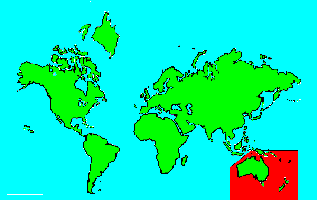SPECIES INFO
Short-head worm-eel (Muraenichthys breviceps) is found along the southern coast of Australia and also found in Tasmania and New Zealand. This long narrow eel can be up to about 24 inches in length.Muraenichthys genus of worm or snake eels contains about 20 species found almost worldwide. 6 species can be found near Australia. This genus probably does not occur along either coast of North America.
Snake and worm eels (family Ophichthidae) are long and narrow eels with almost worldwide distribution. There are about 150 species spread among about 50 different genera. The dorsal fin extends almost the entire length of the body. Although some examples can reach 3 feet or more, most are much smaller species. These eels have a rounded cross section and are without scales. Some species swim along the bottom while others bury in the sand.
Eels, Order Anguilliformes, includes mmostly marine animals with long narrow bodies. Most species have pectoral fins, but lack pelvic fins. Several species breed near Cuba and migrate to freshwater rivers worldwide to reach full size. There are about 450 species divided into about 20 different families.
Bony fish, Class Teleostomi, are a class of chordates that include the majority of fish-like animals found on earth. They are characterized by a bony jaw and a bony skeleton. They are found in both fresh and marine waters.
Backboned Animals (Phylum Chordata) are the most advanced group of animals on earth. These animals are characterized by having a spinal cord or backbone. Most members have a clearly defined brain that controls the organism through a spinal cord. Fish, amphibians, reptiles, birds, and mammals are in this phylum.
Currently, some taxonomists believe that the fish should be divided into two groups (sharks and regular fishes) and that there are some other primitive groups in the phylum such as hagfish or lampreys.
Animal Kingdom contains numerous organisms that feed on other animals or plants. Included in the animal kingdom are the lower marine invertebrates such as sponges and corals, the jointed legged animals such as insects and spiders, and the backboned animals such as fish, amphibians, reptiles, birds, and mammals.

